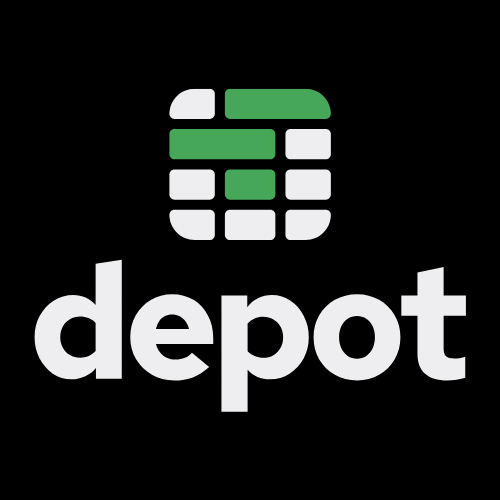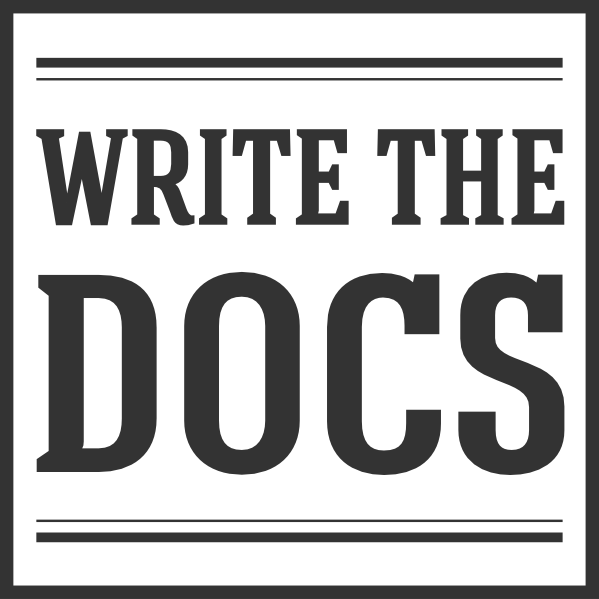Write the Docs Newsletter – October 2025¶
Hello, documentarians! I hope you are all staying grounded amid a world that seems to be changing fast. Docs still matter and so do you.
In conference news, Write the Docs Berlin is coming up soon, on October 27-28. If you don’t have your in-person ticket yet, get one soon before they sell out. Or if you can’t be there in person, get a virtual ticket for live access to the talks and interaction with other attendees.
Looking ahead to next year, Write the Docs Portland 2026 is happening May 3–5. See more info and start making plans.
In other news, the 2025 Salary Survey is now open for submissions. We encourage contributions from everyone who has worked in a documentation-related role for at least part of the past year – full-time, part-time, employee, contractor, or any combination thereof. Returning contributors will be pleased to hear that it’s now shorter!
This month’s newsletter has articles on whether AI means people don’t need to know the product, how to encourage others at your company to search before asking, how to use AI to prove your value, and whether to publish docs late or push to delay releases. Enjoy!
AI and the need for product knowledge¶
As generative AI and AI agents change how users find help, documentarians might be wondering whether users still need traditional product knowledge from documentation to use software effectively.
AI agents can reduce the need for product knowledge but do not eliminate it. Users tend to see how far they can get before they get stuck, but they typically do eventually need the docs. Users also still need a baseline understanding of the product and its capabilities. LLMs themselves rely on documentation to provide accurate information. Documentation therefore remains a reliable source of info for users and AI assistants trained on product content.
The extent of product knowledge that users need also varies. Basic apps require less knowledge, whereas open-ended or domain‑specific software requires both product and subject‑matter knowledge, with good docs as the mortar between the two. AI can help with discovery and less complex step‑by‑step tasks, but it struggles with consistency, novel cases, and new features. So reliable, up‑to‑date documentation is again crucial for both users and LLMs.
Development moves quickly. LLMs that can interpret codebases and summarize product capabilities and new features may become available. However, accuracy is likely to remain a concern and such LLMs would still need to be primed with good documentation.
See more Write the Docs resources about AI and LLMs.
Encouraging colleagues to search for content¶
If you (or your team) are responsible for creating content for internal audiences, how do you get fellow employees to read the documentation? A recent conversation brought up frustrations about this problem. First, consider asking whether employees have problems finding the content they need. This could be valuable feedback about the existing documentation – for example, ease of use or missing content.
It’s unsatisfactory to always answer questions when documentation is available. Others may prefer direct answers to their questions, but it reinforces bad habits and can overwhelm your team and impede your team’s work.
You could try training coworkers about the available documentation. Presentations such as “Lunch & Learns” and “Walkthroughs” may help. But your colleagues may find them boring, ignore the available resources, and keep asking your team.
If the problem occurs within internal communication platforms (such as Slack workspaces), there may be an AI integration tool (such as Moveworks or RAG AI chatbots) to answer questions based upon existing documentation. Such a tool may be costly to implement though, so you’d need a budget and approval. Also, depending upon implementation, employees may be challenged by new technology.
Games can be a fun way for your coworkers to learn about available resources. You can be creative about the types of games (such as bingo, quizzes), the reward system, using intra-or inter-departmental competitions, and whether to publicly recognize the winners. Without sufficient rewards or recognition, gamification may not work. Some employees may consider games patronizing or “a waste of time”.
To reinforce a shift from asking to finding their own answers, you could respond to questions with a standard intro (such as, “I used the KB search tool to find the answer:”) and then a link to the relevant content. This encourages use of available resources. Additionally, have managers and mentors direct their employees to use the documentation.
See more Write the Docs resources about working with other roles.
Using AI to prove AI shouldn’t replace you¶
Many organizations are adopting AI tools to help users find information faster. As these tools become more common in documentation workflows, some leadership teams are beginning to question whether human writers are still needed. In some cases, they have even explored using AI to automate routine updates or replace documentarians altogether.
Ironically, AI can help prove why documentation teams are essential. AI-powered search tools, such as Kapa, can estimate the return on investment (ROI) of documentation through metrics such as support hours saved and customer frustration avoided. These numbers turn the usually invisible impact of documentation into something concrete that leadership can understand. When tracked and shared regularly, they can influence critical business decisions – such as which roles to keep during layoffs or where to invest resources.
It’s also important to remember that AI depends on high-quality, current content. If documentation is outdated or incomplete, AI will provide wrong answers, frustrate users, and damage trust. AI can make it easier for more people to access to good content, but it cannot maintain or verify that content on its own.
To make documentation’s value even clearer, some teams pair AI-generated ROI data with additional metrics: page views, contributor activity, support ticket deflection, and short narratives of real wins. Together, the data paints a fuller picture of how documentation supports both users and the business.
The takeaway: AI can enhance documentation, but it can’t replace the human expertise that makes documentation effective.
See more Write the Docs resources about AI and LLMs.
Delay releases or publish docs late¶
A recent question in the #jira channel asked whether people delayed software releases until docs are ready or rather released docs after releases, maybe weeks later. Some expected the process would look different at small companies versus more established, large ones.
Some responses noted they aim to get release notes published before any release to prepare users for change. Although not always successful, the idea is to prepare people for changes that might affect established ways of working.
One respondent reported success with getting docs to have their own column in a Jira board, which forced people to recognize the work of everyone on the cross-functional team. They even had their column come before QA work, meaning the docs were ready for publishing by the time QA signed off on the feature for release.
Take care that increased visibility within the process can mean an increased need for sign-off from others, such as developers or client-facing team members. This can lead to delays in the docs being ready to publish.
Another person noted the importance of getting commitment in advance. Ask Product Managers whether the feature is one that they’d delay for docs before development starts – make docs a part of the definition of done and the feature won’t be done until the docs are.
See more Write the Docs resources about Agile and workflows.
From our sponsor¶
This month’s newsletter is sponsored by Depot.

Depot just published a guide on collaborating with Claude to write better technical documentation. Discover how AI-assisted workflows excel at the hardest documentation challenges: complex features spanning multiple files, cross-repository docs that need to stay in sync with code, and that all-too-common scenario where features ship first and docs come later. If you’re tired of documentation debt, this approach might change how you work.
At Depot, we’re always experimenting with better ways to build and document software. See the practical strategies we use to maintain consistency, catch issues early, and keep our docs actually useful. Read our guide on collaborating with Claude on docs.
Interested in sponsoring the newsletter? Take a look at our sponsorship prospectus.
Featured job posts¶
Technical Content Writer, StoreConnect - Australia/Remote
Interested in promoting your open position? See our job posting sponsorship for more details.
Write the Docs resources¶
Write the Docs offers lots of valuable resources related to documentation. See all of the Write the Docs learning resources. To discuss any of these ideas or others related to documentation, join the conversation in the Write the Docs Slack community in one of the many channels.
Events coming up¶
17 Oct, 08:30 EDT (US East Coast Virtual): Write the Docs East Coast Virtual Meetup
18 Oct, 10:00 MDT (Boulder/Denver, USA): October Coffee & Conversation
19 Oct, 13:00 EDT (North Carolina, USA): Write the Docs NC Social Hike @ Bass Lake
20 Oct, 12:30 IDT (Tel Aviv+, Israel): Onboarding Yourself as a Technical Writer: Hitting the Ground Running
23 Oct, 18:30 BST (London, United Kingdom): Prose and Cons: Creative Writing for Technical Docs
23 Oct, 17:30 PDT (Portland, USA): WTD PDX + PSU Supermeetup: GenAI as Writing Coach w/Dr. Brett Oppegaard
23 Oct, 18:30 PDT (San Francisco, USA): How Do Today’s Technical Writers Get Things Done?
31 Oct, 08:30 EDT (US East Coast Virtual): Write the Docs East Coast Virtual Meetup
4 Nov, 19:00 MST (Calgary, Canada): Write the Docs Calgary November 2025 Meetup
5 Nov, 17:30 EST (Pittsburgh, USA): Doc troubles and social event



